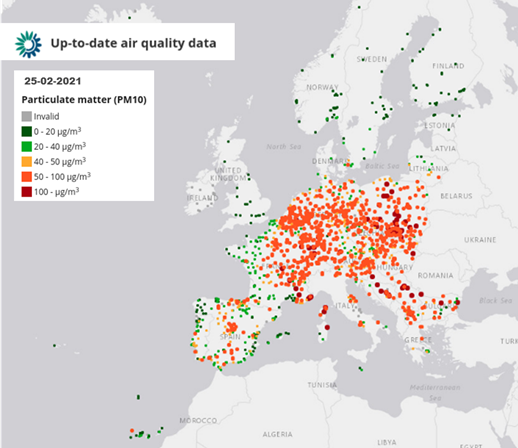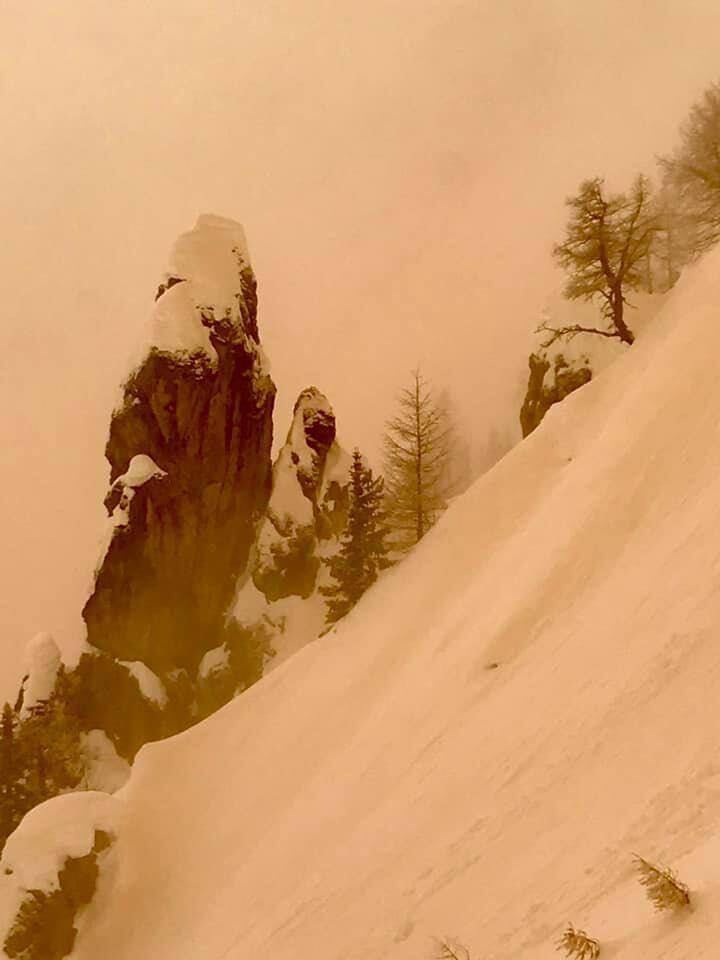The presence of dust particles in the atmosphere affects air quality and has a strong impact on health and the environment.
BSC regional models provide three-day advance desert dust intrusion forecasts.
The European continent is experiencing an exceptional month of February after suffering several episodes of intrusion of Saharan dust, a rare phenomenon at this period of the year.
“Dust intrusions of this intensity and with such frequency are not usual during the month of February. The dust cycle usually peaks between the spring and summer seasons, so we are definitely talking about an atypical February. This is mainly a consequence of winds from the south, which are causing exceptionally high temperatures for this period of the year but in turn transport dust from the Sahara,” says Sara Basart, researcher at the Atmospheric Composition group at the Barcelona Supercomputing Center (BSC) and scientist in charge of the Barcelona Dust Regional Center.
An intrusion of Saharan dust is affecting Spain this week and will move towards France and northern Europe in the coming days, reaching the Scandinavian region. As a result of this phenomenon, values that exceed the daily limit of particulate matter (PM10) established by the European Union (EU) have been detected throughout Europe. Air quality forecasting models indicate that the current event will end next Saturday and predict a new intrusion starting Sunday that would affect the Iberian Peninsula, the western Mediterranean, and the Canary Islands.
This increase in dust particles in the atmosphere has led to the daily limit value for particulate matter for the protection of human health (PM10> 50µg / m3) being exceeded in a large part of the European continent. This limit is set by the European regulation of the air quality, as well as it is recommended by the World Health Organization (WHO).
Due to this intrusion of dust from Africa, the Catalan government has declared an episode of high air pollution by PM10 particles throughout Catalonia. The protocol establishes a series of recommendations to the population, such as reducing travel by private vehicle and moderating physical activity outdoors, especially among people with respiratory and cardiovascular diseases. Likewise, municipalities are urged to restrict works and actions that raise dust and therefore generate more particles, as well as to control industrial activities.
Recent precedents
The current episode comes a few weeks after the one that occurred on February 5, when a dust storm originating in Algeria reached the Iberian Peninsula and moved towards France, Italy, and Switzerland. It was an event of a certain intensity, in which the daily average of 50µg/m3 was exceeded in French, Italian and Swiss air quality stations, reaching 100µg/m3 in Catalonia and the Balearic Islands. In addition, the intrusion of dust was accompanied by rain and snow, which colored in red the main high mountain areas of Europe, such as the Alps and the Pyrenees.
A few days later, on February 15, the Canary Islands experienced another massive intrusion of Saharan dust caused by intense easterly winds that carried the dust towards the archipelago and other areas of the eastern Atlantic. The phenomenon, known in the Canary Islands as ‘calima’, caused significant visibility problems for almost a week.
Importance of prediction
Dust intrusions cause significant repercussions on society. The WHO states that breathing daily average values above 50 µg/m3 has an impact on our health. During these events of poor air quality, mortality increases and there are more admissions to hospitals associated with cardiorespiratory diseases.
The Barcelona Supercomputing (BSC), together with the Spanish Meteorological Agency (AEMET), manages the “Barcelona Dust Regional Center”, which is the Regional Center for North Africa, the Middle East and Europe of the World Meteorological Organization (WMO) for the prediction and warning of dust and sand storms. This center offers forecasts of dust intrusions three days in advance.
The Spanish environmental quality law establishes that citizens must have access to air quality information, as well as that authorities must alert the population of events that exceed the established air quality thresholds, therefore the importance of having of these forecasts. There are sectors of society more vulnerable to this type of event, such as people who suffer from cardiorespiratory diseases. Having the information available to the authorities in advance enables better management of resources in hospitals, as well as carrying out preventive measures in asthmatic patients. A good example is a collaboration that the BSC has carried out with Biodata for the development of a prototype for asthmatic patients in the Valladolid area.
Other sectors that can benefit are the solar energy sector, since the presence of dust reduces the productivity of solar plants, or the aeronautical sector, since the reduction of visibility can cause the closure of airports, as happens in the Canary Islands during severe dust episodes.
Origin and frequency of dust intrusions
Dust and sand storms start in arid regions when there are sufficient wind conditions to lift particles into the atmosphere. Dust intrusions into Europe occur regularly because of its proximity to the Sahara Desert. Scientific studies establish that in regions of Europe below 45ºN latitude, an increase in the levels of particles in the air is detected more than 20 days a year due to African intrusions. In the case of southern Spain, more than 35 days a year are reached. These events usually occur in spring and summer.
BSC and the dust study
The “Barcelona Dust Regional Center” offers free dust intrusion forecasts through its website (https://dust.aemet.es /) and the Twitter account @Dust_Barcelona. In addition, the forecasts are also accessible through the BSC website (www.bsc.es/ess) and are included in the air quality notices issued by the Ministry for the Ecological Transition and the Demographic Challenge.
The BSC has a long tradition in research on desert dust and hosts an AXA Chair on mineral dust storms financed by AXA Research Fund, led by Carlos Pérez García-Pando, ICREA and AXA Professor, and Head of the Atmospheric Composition group at BSC. García-Pando also leads the FRAGMENT project, an ERC Consolidator Grant, which aims to understand the composition of atmospheric mineral dust on a global scale and its impact on climate.
Other information of interest:
- Scientific team tracks deserts to decipher dust and its effects on climate
- BSC researcher Carlos Pérez García-Pando to participate in a NASA-funded space sensor to map the composition of the world´s dust sources
- BSC leads the InDust-International Network to encourage the use of monitoring and forecasting dust products

Measures of the European Network for air quality monitoring for February 25. European Environmental Agency (https://www.eea.europa.eu/data-and-maps/explore-interactive-maps/up-to-date-air-quality-data)
- Image 1,2,3: Saharan dust turns Pyrénées snow brownish- Credit: European Union , Copernicus Sentinel-2 imagery
- Image 4,5,6: Federico Colli.







